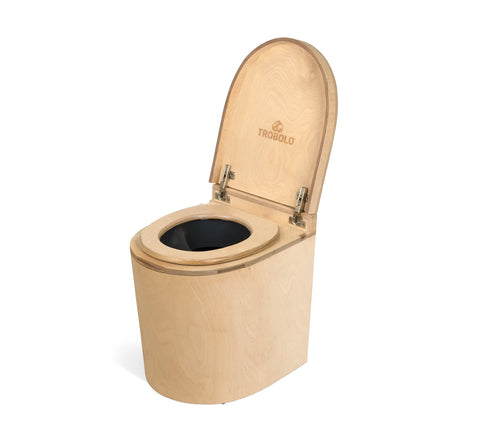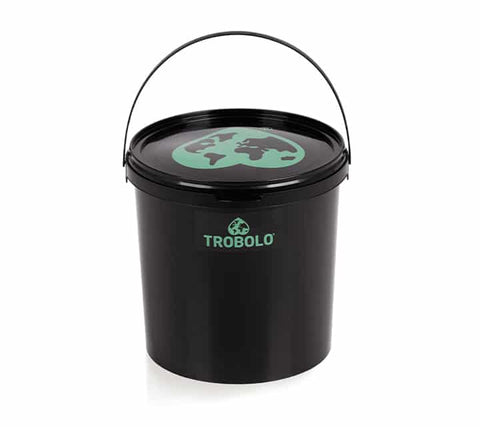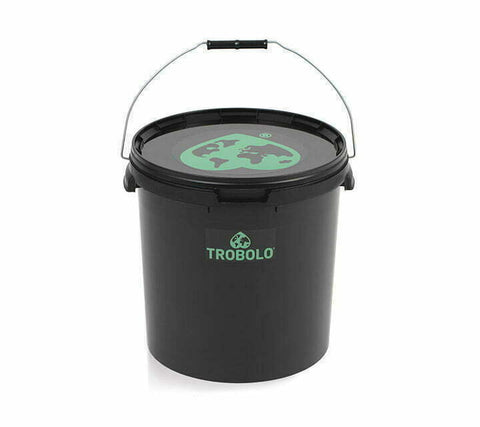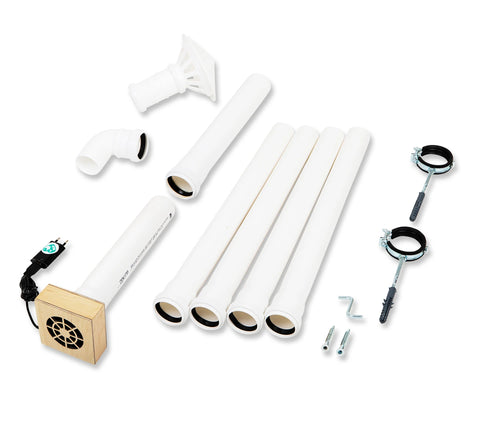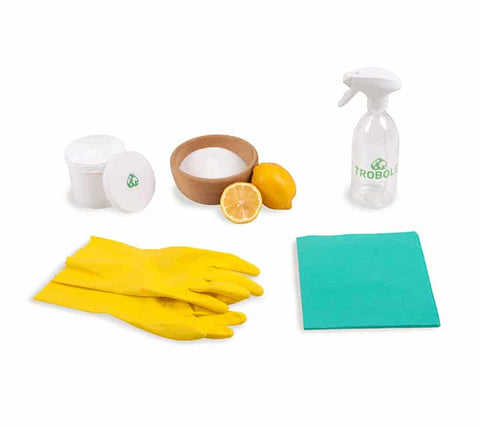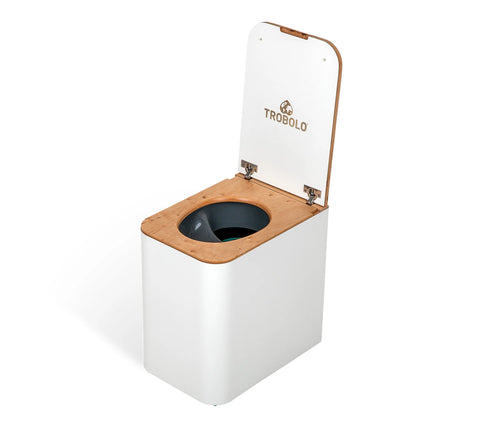

The dry and urine diverting toilet trend
Dry toilets are becoming more and more popular. Dry toilets are increasingly being used, in particular by weekend and holiday home owners, or as a toilet solution in garden houses or allotments.
Even though these toilets do not require any water at all, no compromises in terms of hygiene are necessary: even without water or (toilet) chemicals, separating and dry toilets are not only particularly environmentally friendly, but also hygienic and odourless thanks to the way they function.
In this article we will explain what other advantages make the purchase of a dry toilet attractive, how they work exactly, but also what disadvantages can arise in individual use cases.
The difference between dry toilets and urine diverting dry toilets
Since the terms dry toilet and separating toilet are often used synonymously both in online forums and in colloquial speech, it is necessary at this point to clarify these terms.
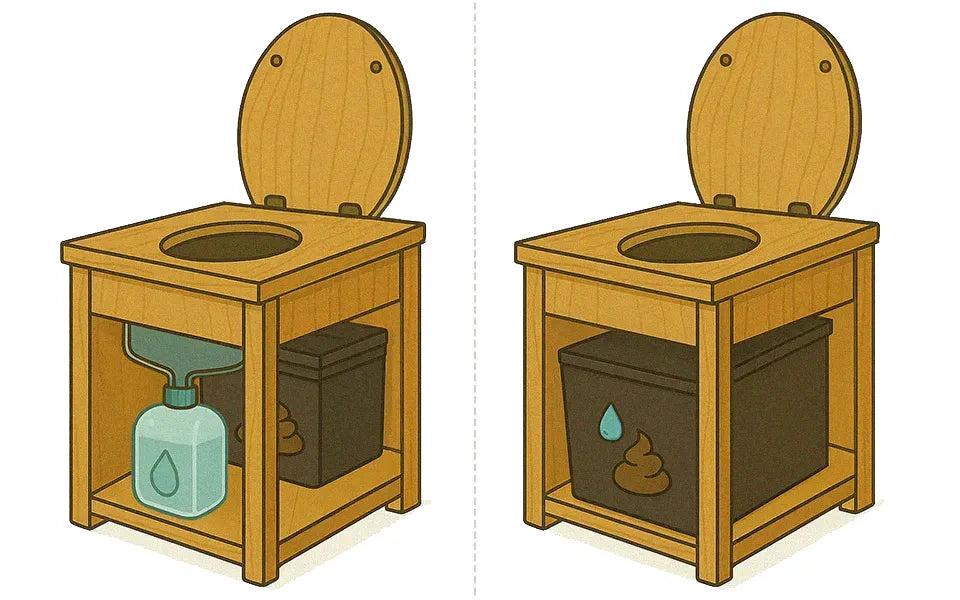
Left: Separating toilet · Right: Dry toilet
What is a dry toilet?
Separating toilets are always dry toilets, with the exception of a few models that can also be operated with water. On the other hand, dry toilets are not necessarily separating toilets! All dry toilets, such as the compost toilet, are waterless toilet systems, but most do not separate the excreta. Dry toilets are therefore characterised above all by the fact that they do not require flushing with water and consequently do not need to be connected to a sewage system. They are therefore a waterless alternative to the conventional toilet, which at the same time relieves local sewage systems.
And what is a urine diverting dry toilet?
As the name suggests, it is the other way round with separating toilets. With the aid of a urine diverter, liquid is separated from solid waste and collected in a separate container. It is therefore a dry toilet with a separation system. Urine is fed into a container at the front, while feces and toilet paper end up in a solids container in the rear area, where they are covered with litter after each toilet visit. This removes liquids from solid matter and at the same time prevents formation of unpleasant odours.
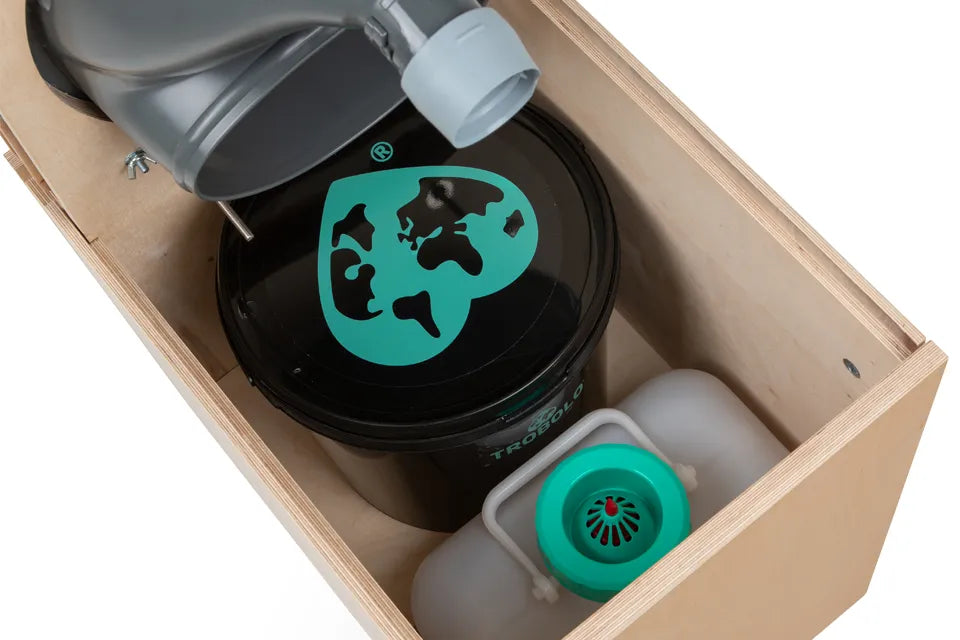
An electrical exhaust system can also be used for this purpose. Some systems, such as the TROBOLO TeraBlœm with electric exhaust system, work so efficiently that it eliminates any need for litter.
Even just separating urine from feces reduces odour formation to a minimum, as it is precisely the mixing of solid and liquid excreta that causes such odours in the first place. One of the main reasons for separating urine from feaces is therefore the prevention or minimisation of odours.
Another reason is the easy disposal and further use of toilet waste as compost, which is made possible thanks to the separation process.
The differences between dry toilets and urine diverting dry toilets, as well as their similarities are therefore obvious.
To compare those factors between the two systems once again, we have summarized the key points in the following table:
| Dry Toilet (Bucket Toilet) |
Urine-Diverting Dry Toilet (Separating Toilet) |
|
|---|---|---|
| Number of containers |
1 (all waste combined) | 2 (urine & solids separated) |
| Separator insert |
No separator | Diverter for urine & solids |
| Odour formation |
High, since urine & solids are mixed | Minimal, since solids and liquids are separated |
| Disposal | All waste together in residual waste or a conventional flush toilet | Urine diluted with water as natural fertiliser or disposed of via flush toilet; solids composted or disposed of in residual waste |
| Price range |
From approx. €10 | From approx. €130 |
Functionality of a dry toilet with urine diverter
The separating or dry toilet has an appearance similar to a conventional toilet.
However, it looks a bit different on the inside. Dry toilets with a separation system are based on the rather simple idea of collecting urine and feces separately. This makes sense because feces make up only about 10% of our excrements. Urine, if collected separately (yellow water), can be disposed of much more easily than when it is mixed with feces (black water). Thanks to the separation procedure, considerably less toilet waste is produced, which needs to be composted or disposed of in the same manner as household waste, such as used diapers.
In order to ensure separation, a urine diverter is used in dry toilets, which directs urine into a liquids container at the front; whereas feces end up in the rear part of the toilet in a solids container, where they are collected without coming into contact with the container itself, thanks to the use of so-called inlays (collection bags). After the “business” has been completed, a quantity of litter is finally added to the solid precipitates in order to bind any residual liquids.
In some models with an electrical exhaust system, the use of litter is not necessary, as odours and moisture are reliably removed through ventilation. If you decide to use an electrical exhaust system, the user of litter is not necessary. Used toilet paper can also be placed directly in the collection container.
How to use a dry toilet with urine diverter
So now you know how a dry toilet works in theory.
But what does it look like in practice?
Ok, the way a dry toilet works is significantly different to a conventional toilet. Nevertheless, users of a dry toilet do not have to prepare themselves for any drastic changes when using the toilet.
This is because the separation of feces is contact-free, reliable and more or less by itself, thanks to the urine diverter. As with a normal toilet, direct physical contact only occurs with the toilet seat.
Why now more or less by itself?
It’s simple: the sitting position on a dry toilet is the same as on a toilet. However, urinating standing up is not recommended under any circumstances. If you can’t do without it, you need to be pretty practised at what you’re doing to ensure separation. In that case: Chapeau!
Proper use of the dry toilet can significantly minimise or delay the occurrence of unwanted odours.
Let’s take a closer look at this.
How to prevent odours from forming in dry toilets
Because many new users of dry toilets are often very concerned about odours, we show you what is important in the following video:
To summarise: Separating solid and liquid excretions effectively prevents the main cause of odour formation.
This is because unpleasant odours are caused in particular by the mixing of solid and liquid excrement. When these two excretions meet, the moisture content is inevitably particularly high, which in turn has a catalysing effect on odour formation.
In addition, the putrefaction and decomposition processes of the mixed excrement lead to the formation of ammonia, which is responsible for the majority of unpleasant odours.
Fortunately, thanks to the separation principle, this risk does not exist with dry separation toilets.
Nevertheless, we recommend wiping out the urine diverter briefly after every visit to the toilet. For example, with a piece of (damp) toilet paper or a cloth and a splash of organic cleaner.
The less residue that sticks to the urine diverter, the fewer unwanted odours you will have to deal with afterwards.
Another advantage: TROBOLO urine diverting toilets are equipped with our patented SafeShell System®. This ensures 100% spill-proof use and reliably prevents odours from escaping the urine container. While other systems often rely on a simple plug that has to be removed and reinserted with each use, our system offers a clean, safe and especially convenient solution.
The appearance of unpleasant odours is additionally delayed if a sip of vinegar is poured into the liquid container at regular intervals (author’s tip: 2 x daily or 1 x in the morning, 1 x in the evening). The vinegar neutralises unwanted odours that could escape from the container. (Caution: water has exactly the opposite effect!)
In order to really eliminate odours, the installation of an electrical exhaust air system is also recommended. This conveys residual odours and any moisture to the outside via an exhaust air duct.
The exhaust air duct is installed either vertically at a height of around two metres so as not to disturb surrounding areas with odours or horizontally directly through the outer wall, provided there are no occupied areas directly behind it.
An efficient exhaust air system prevents 100% of residual odours from escaping from the dry toilet and is even more convenient in this respect than a conventional system.
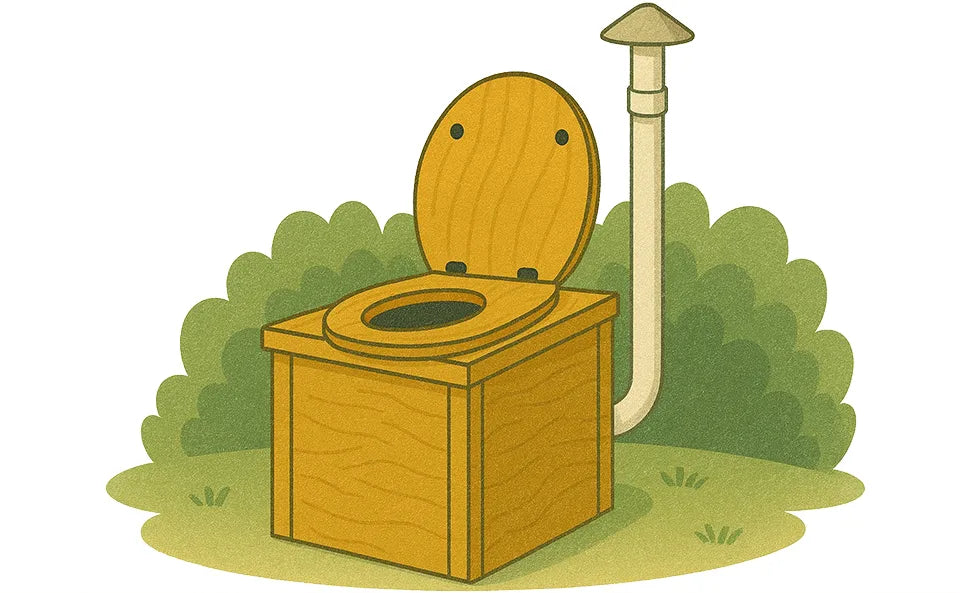
A urine diverting dry toilet – but without a liquid container
How can a urine diverting dry toilet work when it doesn’t have an insertable liquid container to divert the urine into? A real-life example is our TROBOLO TinyBlœm.
The trick lies in the integrated urine drainage system: the urine diverter is directly connected to a pipe that channels the urine through a hose into a container located outside the toilet and the building.
In addition, a ventilation system can be installed that reliably directs residual moisture outside. Since the main cause of odours is moisture, this ensures that the toilet remains hygienic and odour-free in the long term. With our TinyBlœm, this system is already integrated into the toilet.
Watch the video to see exactly how the system works:
Please note that this video is in German. You can turn on subtitles for a better viewing experience.
Accessories, disposal and cleaning
As soon as the dry toilet with separation system is ready for use, in addition to litter which binds the feces, only inlays for the solids container are needed to cleanly dispose of its contents. Depending on the disposal method, inlays made of plastic or biodegradable material, such as maize starch, can be used, which will then be disposed into a composter, along with its contents. However, it should be noted that compostable inlays have a limited shelf life and, like the solids themselves, decompose eventually, which is why it is advisable to change them on a weekly basis. Inlays made of plastic, on the other hand, have an unlimited shelf life and are therefore particularly suitable for longer intervals between disposals, which can be achieved with separation toilets that have an electrical exhaust system installed. Furthermore, the use of plastic inlays does not rule out composting the toilet waste, as it is much drier than one might expect. In this case, inlays and solids can easily be disposed of separately.
In this video, we take a closer look at the two inlay variants that you can use to line your solids container:
Thanks to inlays, cleaning of the solids container is kept to a minimum, as the precipitates never come into direct contact with it. After removing the inlays, cleanliness and hygiene of the solids container can be restored quickly and easily by occasionally wiping it with a damp cloth.
Disposal of excrements from dry toilets with urine diverter
Disposal of the precipitates in dry toilets with separation system is problem-free and takes only a few steps, but may have to be performed in accordance with official guidelines. Urine can either be diluted with water and used as fertilizer or disposed of in a toilet connected to the main sewage system. Solid excreta can be disposed of – similar to diapers – in household waste if they are kept in plastic inlays, or in the organic waste bin if suitable bags are used.
However, it is important to enquiry with local authorities about proper disposal methods. Sometimes compostable inlays can cause problems in regional disposal stations or biogas plants, which is why this type of disposal is prohibited in many communities. For this reason, decentralised composting of biomaterial in one’s own garden is often recommended, which also respects the natural cycle of such materials. In any case, one should enquire in advance with local authorities as to the planned method of disposal.
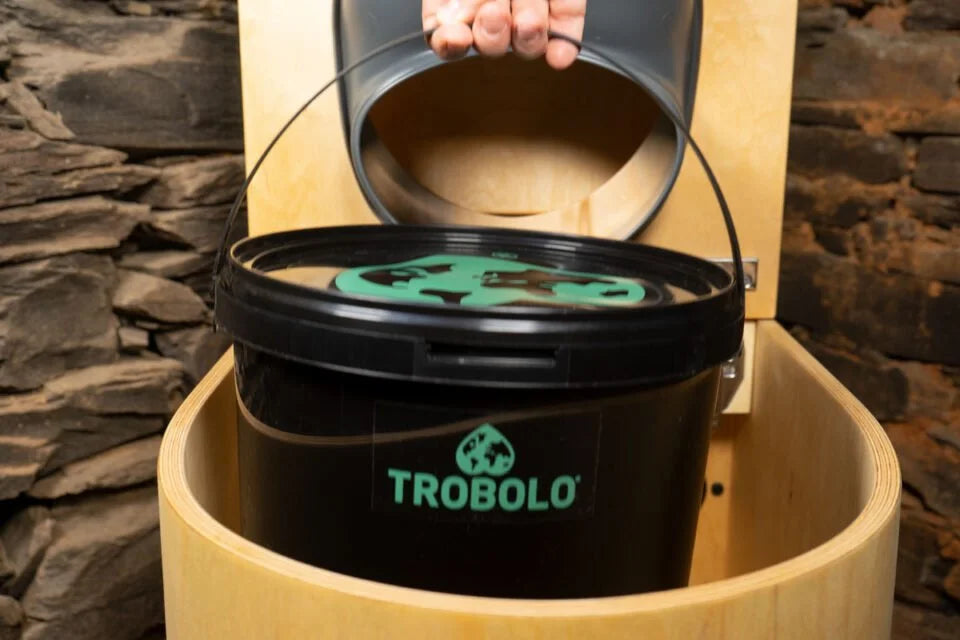
Cleaning of dry toilets with a urine diverter
Once urine and feces have been disposed of, cleaning of a dry toilet with separation system can then be carried out in just a few steps and with minimal effort. As already mentioned, the two storage containers can be wiped off with a damp cloth if necessary. The hygienic maintenance of the outer components of the dry-separating toilet, such as the toilet seat, is also straightforward and can be carried out in a few simple steps. As with a conventional toilet, cleaning with a cloth and some cleaning agent is entirely sufficient.
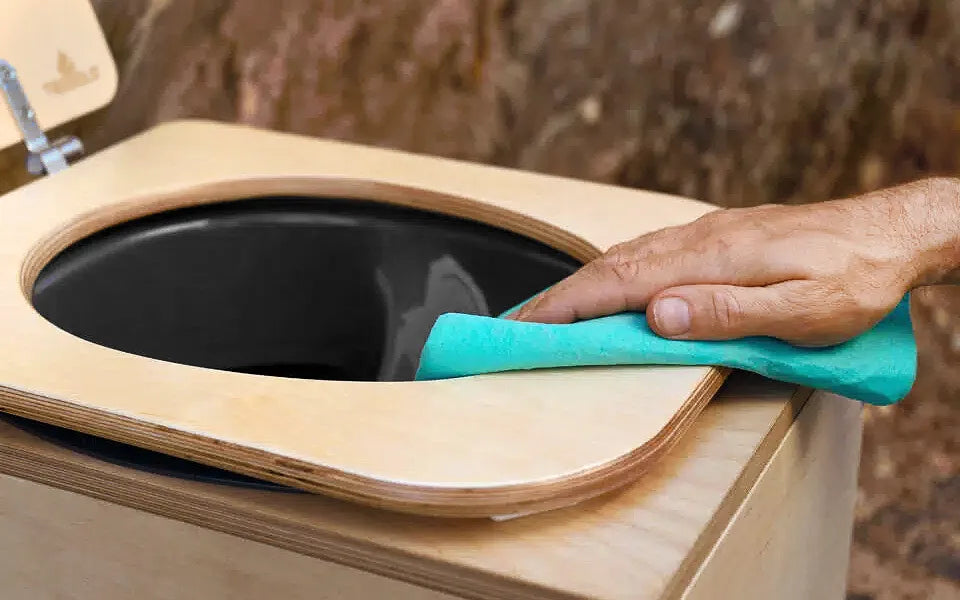
Applications of dry toilets
The functionality of dry toilets opens up a wide range of applications. Since neither access to water mains nor a connection to the sewage system is required, a dry toilet can be installed and used almost anywhere. This flexibility and independence means that they are mostly used where the aforementioned utilities are either not present, or too difficult to access. These toilets can be used both indoors and outdoors. For example, gardens, golf courses, dog schools, riding stables or day-care centres are ideal locations for outdoor dry toilets. As for indoors applications, dry toilets are suitable for use in holiday homes, gazebos, caravans, mobile homes and boats.
Advantages and disadvantages of urine diverting dry toilets at a glance
The particular advantages and disadvantages of using a dry toilet with separation system are illustrated as follows:
Advantages
- No water: No access to sewage systems is necessary
- Free of chemicals: The decomposition of urine and feces takes place naturally and is not prevented by environmentally harmful additives
- Hygienic: No compromises in terms of hygiene compared to conventional toilets
- Environmentally friendly and easy disposal: Disposal essentially happens through normal household waste collection. Alternatively, feces can be properly composted if required; urine diluted with water can be used as fertilizer
- Odourless: Separation of precipitates minimises formation of odours, an exhaust air system completely prevents them from occurring
- Autonomy: Non-reliance on local sewer systems and simple disposal of the precipitates guarantee the greatest possible independence
Disadvantages
- Accessories: For a biodegradable and uncomplicated disposal, special storage bags are required, provided you wish to dispose of them along with the excreta. Alternatively, the contents of storage bags can be composted, and plastic bags disposed of separately
- Electricity: Depending on the type of exhaust air system, an electricity connection is required
Our conclusion about urine diverting dry toilets
The above remarks show that dry toilets with a separation system are far more than just an alternative to conventional toilets, in cases where those cannot be operated, for example due to a lack of access to water. Dry toilets with a separation system are also odourless, do not contain any chemicals and are also extremely environmentally friendly due to their waterless operation, as well as the possibility of composting excreta. In addition, our TROBOLO dry toilets are made of high-quality and durable wood, and can be set up quickly and easily anywhere.
FAQ
Frequently Asked Questions
Here you will find short and clear answers to questions we are frequently asked.
How to empty a urine diverting dry toilet?
Emptying a urine diverting dry toilet is straightforward and hygienic when done regularly. Solids are collected in a dedicated container and should be emptied once they reach the recommended fill level or when the container starts to feel heavy. To prevent moisture build-up and odours, add some litter on top of the solids after each use. Urine is collected separately and can be used as a diluted natural fertiliser or be disposed of via a flush toilet, depending on local regulations.
Where do I put the toilet paper when using a urine diverting toilet?
You can easily dispose of toilet paper in the solids container. To prevent moisture build-up and odours, you should cover it directly with some litter, just like the solids. We recommend using thin, unbleachedand quickly compostable paper, as it decomposes more naturally. However, some users prefer to collect used paper separately to slow down the filling of the solids container – both options are possible.
Why does my urine diverting toilet smell?
A urine diverting dry toilet can start to smell when urine remains in the container for too long or when solids are not sufficiently dried. For the solids, simply adding more litter is enough to bind the residual moisture. If urine odours occur, it’s important to stick to regular emptying intervals, even if the liquids container isn’t completely full. Especially in hot weather, it’s better to empty it more often rather than too seldom.
What litter can I use for a urine diverting dry toilet?
For a urine diverting toilet to function reliably, you need a cover material that effectively binds moisture, reduces odours and allows solids to dry quickly. Untreated wood shavings and sawdust are best suited for this purpose. We recommend our TROBOLO litter: it is made from wood shavings and sawdust produced during the manufacturing of our separating toilets. This makes it not only sustainable but also specially tailored to the needs of a urine-diverting dry toilet and ideal for reliably binding moisture.
-
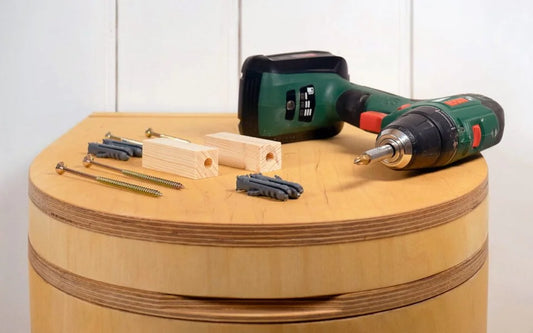
"Do-it-yourself" is the latest trend, so it's not surprising that more and more people want to build their composting toilet themselves. But how does that actually work?
Build your DIY composting toilet with ease
"Do-it-yourself" is the latest trend, so it's not surprising that more and more people want to build their composting toilet themselves. But how does that actually work?
-

In this TROBOLO guide on composting in the garden, we show you how to properly compost organic waste in your own garden. This allows you to support the natural cycle...
How and what to compost - The ultimate guide
In this TROBOLO guide on composting in the garden, we show you how to properly compost organic waste in your own garden. This allows you to support the natural cycle and at the same time obtain nutrient-rich humus.
-

Here you will learn everything about the emptying process of our TROBOLO composting toilets and the disposal of toilet waste.
How to empty a composting toilet
Here you will learn everything about the emptying process of our TROBOLO composting toilets and the disposal of toilet waste.
